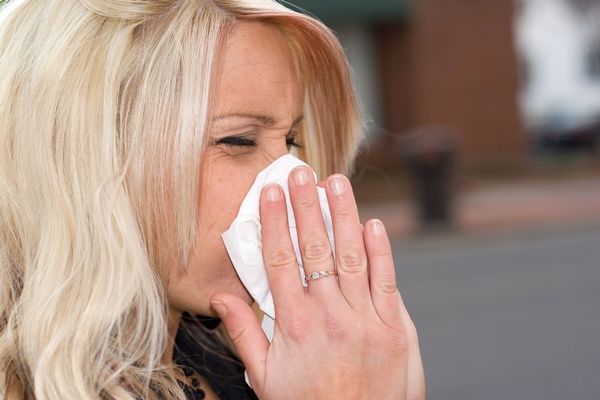Allergies are nothing new for many people. They grow up suffering the effects of hay fever from season to season. A recent study in the journal Thorax has explored a link between hay fever and being exposed to prenatal pollutants. The findings are pretty surprising. The body of research on the topic isn't as large as it should be, but the study hopes to present conclusions based on a large sample size of subjects. If air pollutants are indeed causing this increase in hay fever, how do we prevent its continued increase? Before we explore the study's findings, we must first understand hay fever and its connection to pollutants.
Hay Fever and Pollutants
According to the journal Reports on Biochemistry and Molecular Biology, the incidence of allergic disease and asthma has been rising in recent decades. The exact reason for this is multi-faceted. There's no single element that can take the entire blame for the rise in cases. However, there is a distinct link between air quality and allergic reactions such as hay fever. A paper published in the journal Environmental Research notes that air pollutants can exacerbate existing asthmatic conditions significantly. But how do we get to this point? How does a child develop hay fever allergies in the first place?

Developing Hay Fever
Hay fever is an allergic reaction to pollen in the air. While most people develop hay fever as children, there are some cases where adults have spontaneously come down with the condition. Whether you develop an allergy or not depends heavily on your genes. Even so, this just means that you are susceptible to an allergic reaction. Whether you actually have one or not comes down to if your body develops antibodies to a particular allergen. Typically, human bodies only produce antibodies to viruses and bacteria. In the case of allergies, the body also develops antibodies to everyday substances like pollen, which is the case with hay fever. When pollen counts in the air become too much, your body responds by increasing its antibody count. The result is swollen eyes and the symptoms of an immune response.
Exploring the Study's Findings
The study was done on over 140,000 babies born in Taiwan. It didn't focus specifically on hay fever but the overarching allergic condition known as allergic rhinitis. Allergic rhinitis isn't just limited to pollen but can also occur in response to dust, mold, or flakes of skin from animals. Typically, sufferers of allergic rhinitis demonstrate cold-like symptoms such as sneezing and itchiness. Blocked or runny noses are common as well. The response usually occurs soon after exposure to a particular allergen. Noting the lack of research in the area of pre and postnatal exposure to fine particulate matter (PM2.5) and allergic rhinitis, the team set out to explore any links.
Using satellite time trend readings, meteorological data, and land use data, the team noted that over a third of the children developed the condition. The cross-referenced data confirmed a link between the development of allergic rhinitis and exposure to PM2.5. This exposure happened between 30 gestational weeks up until the babies were a year old. Based on the results, the team concluded a significant link between prenatal and postnatal exposure and the development of allergic rhinitis. The window where children are most vulnerable occurs from the third trimester up to one year after birth.
Air Conditions Need To Be Considered
The study was undertaken in Taiwan, meaning that the local air quality was studied regardless of if it was a proper representation of worldwide air quality. While Taiwan doesn't demonstrate heavy levels of air pollution, the fact that a third of kids developed the condition doesn't bode well for the rest of the world. In more polluted areas like India or mainland China, the incidence of allergies associated with air pollution maybe even more common. The rise in hay fever incidences can be linked to exposure to poor quality air even before a child is born. But in such a case, if this link proves to be dependable, what can a parent do?
Some people may opt to buy air filters for their homes. Others may invest in climate control apparatus to help manage pollen and dust counts in the air. However, controlling air pollution might be the most effective means of slowing this increase in hay fever in the populace. There are already measures implemented to lower emissions, but this study may force us to ask the question if we're doing enough. With population figures continuing to rise, the wanton exposure of children to pollutants in the air may be responsible for severe allergies in some kids. And it's not just children either. Some adults also develop hay fever late in their lives. With the rates of allergies rising, we may need to explore how to control the incidence of these conditions more carefully.



Comments